Emulating interactions between microorganisms and tumor microenvironment to develop cancer theranostics
- PMID: 35401838
- PMCID: PMC8965491
- DOI: 10.7150/thno.70719
Emulating interactions between microorganisms and tumor microenvironment to develop cancer theranostics
Abstract
The occurrence of microorganisms has been confirmed in the tumor microenvironment (TME) of many different organs. Microorganisms (e.g., phage, virus, bacteria, fungi, and protozoa) present in TME modulate TME to inhibit or promote tumor growth in species-dependent manners due to the special physiological and pathological features of each microorganism. Such microorganism-TME interactions have recently been emulated to turn microorganisms into powerful cancer theranostic agents. To facilitate scientists to explore microorganisms-TME interactions further to develop improved cancer theranostics, here we critically review the characteristics of different microorganisms that can be found in TME, their interactions with TME, and their current applications in cancer diagnosis and therapy. Clinical trials of using microorganisms for cancer theranostics are also summarized and discussed. Moreover, the emerging technology of whole-metagenome sequencing that can be employed to precisely determine microbiota spectra is described. Such technology enables scientists to gain an in-depth understanding of the species and distributions of microorganisms in TME. Therefore, scientists now have new tools to identify microorganisms (either naturally present in or introduced into TME) that can be used as effective probes, monitors, vaccines, or drugs for potentially advancing cancer theranostics to clinical applications.
Keywords: cancer theranostics; microbiota spectra; microorganisms; tumor microenvironment (TME).
© The author(s).
Conflict of interest statement
Competing Interests: The authors have declared that no competing interest exists.
Figures


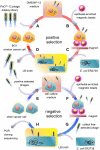



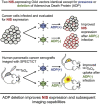


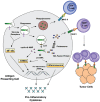


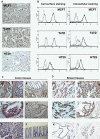

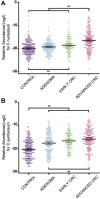

Similar articles
-
Radionuclide imaging and therapy directed towards the tumor microenvironment: a multi-cancer approach for personalized medicine.Eur J Nucl Med Mol Imaging. 2022 Nov;49(13):4616-4641. doi: 10.1007/s00259-022-05870-1. Epub 2022 Jul 5. Eur J Nucl Med Mol Imaging. 2022. PMID: 35788730 Free PMC article. Review.
-
Two-dimensional nanomaterials for tumor microenvironment modulation and anticancer therapy.Adv Drug Deliv Rev. 2022 Aug;187:114360. doi: 10.1016/j.addr.2022.114360. Epub 2022 May 28. Adv Drug Deliv Rev. 2022. PMID: 35636568 Review.
-
ROS-Responsive Nanomedicine: Towards Targeting the Breast Tumor Microenvironment.Curr Med Chem. 2021;28(28):5674-5698. doi: 10.2174/0929867328666201209100659. Curr Med Chem. 2021. PMID: 33297907 Review.
-
Nanomedicine-based strategies to target and modulate the tumor microenvironment.Trends Cancer. 2021 Sep;7(9):847-862. doi: 10.1016/j.trecan.2021.05.001. Epub 2021 Jun 3. Trends Cancer. 2021. PMID: 34090865 Review.
-
Nanoparticles Targeting and Remodeling Tumor Microenvironment for Cancer Theranostics.J Biomed Nanotechnol. 2018 Jul 1;14(7):1189-1207. doi: 10.1166/jbn.2018.2546. J Biomed Nanotechnol. 2018. PMID: 29944095 Review.
Cited by
-
Influence of gut flora on diabetes management after kidney transplantation.BMC Nephrol. 2024 Dec 23;25(1):468. doi: 10.1186/s12882-024-03899-y. BMC Nephrol. 2024. PMID: 39716100 Free PMC article. Review.
-
Identification and Verification of Key MiRNAs Associated with Intervertebral Disc Degeneration.Comb Chem High Throughput Screen. 2023;26(9):1766-1774. doi: 10.2174/1386207325666220915113438. Comb Chem High Throughput Screen. 2023. PMID: 36111773 Free PMC article.
-
Visualization of the relationship between fungi and cancer from the perspective of bibliometric analysis.Heliyon. 2023 Jul 21;9(8):e18592. doi: 10.1016/j.heliyon.2023.e18592. eCollection 2023 Aug. Heliyon. 2023. PMID: 37529342 Free PMC article.
-
Fungi and cancer: unveiling the complex role of fungal infections in tumor biology and therapeutic resistance.Front Cell Infect Microbiol. 2025 Jun 10;15:1596688. doi: 10.3389/fcimb.2025.1596688. eCollection 2025. Front Cell Infect Microbiol. 2025. PMID: 40557321 Free PMC article. Review.
-
Bioinspired micro- and nanostructured systems for cancer therapy.MedComm (2020). 2024 Nov 28;5(12):e70025. doi: 10.1002/mco2.70025. eCollection 2024 Dec. MedComm (2020). 2024. PMID: 39619230 Free PMC article. Review.
References
-
- Bray F, Ferlay J, Soerjomataram I, Siegel RL, Torre LA, Jemal A. Global cancer statistics 2018: GLOBOCAN estimates of incidence and mortality worldwide for 36 cancers in 185 countries. CA Cancer J Clin. 2018;68:394–424. - PubMed
-
- Najafi M, Goradel NH, Farhood B, Salehi E, Solhjoo S, Toolee H. et al. Tumor microenvironment: Interactions and therapy. J Cell Physiol. 2019;234:5700–21. - PubMed
-
- Jobin C. Precision medicine using microbiota. Science. 2018;359:32–4. - PubMed
-
- Dzutsev A, Goldszmid RS, Viaud S, Zitvogel L, Trinchieri G. The role of the microbiota in inflammation, carcinogenesis, and cancer therapy. Eur J Immunol. 2015;45:17–31. - PubMed
Publication types
MeSH terms
LinkOut - more resources
Full Text Sources
Medical

